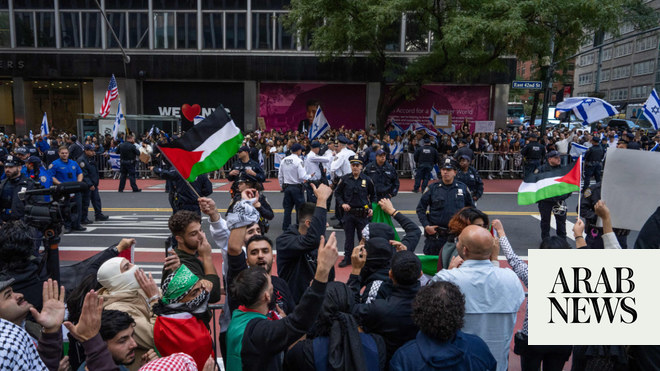
Hundreds of Palestinians were wounded by Israeli gunshots on Friday in protests on the Gaza border.
Medics said around 50 people were shot and wounded with live fire, three of them critically, and 300 more treated for gas inhalation and other injuries along the Gaza side of the 25-mile (40-km) border fence, where Palestinians set up tent encampments on March 30 for what they call “The Great March of Return”.
After advancing toward the border fence, protesters would retreat when the Israeli army fired tear gas.
A military spokeswoman said that some of the protesters threw stones at the Israeli forces.
Crowds were smaller than previous weeks, with Palestinians saying they were expecting a major protest on May 14, when the United States will move its embassy from Tel Aviv to Jerusalem.
Forty-nine Palestinians have been killed since protests and clashes began in March.
Israel says its soldiers only open fire when necessary to stop infiltrations, damage to the fence and attacks. Its use of live fire has been widely condemned by the international community.
Shifa Abu Qadous, 28, whose family was originally from Jaffa, part of Tel Aviv, was bringing water to protesters near the border fence.
Wearing a headscarf and a dust-mask hanging around her neck, she said she came to the protests every week.
"Im not afraid, theres only one death," she said. "Today or tomorrow or after that we will return to our homes."
In central Gaza, dozens were gathered east of the Bureij refugee camp.
Youths met behind a series of bunkers reinforced with sandbags in the area leading up to the border with Israel, while older demonstrators remained further back at protest tents.
A group of Palestinian youths threw stones in the direction of Israeli soldiers, who had taken up position some 50 meters (yards) away on the other side of the fence.
The Israeli army estimated that 7,000 Palestinians took place in this Fridays demonstrations in five main locations along the border fence.
Protesters said they used slingshots to down two small Israeli observation drones. The army confirmed the drone losses.
Israel accuses Hamas of seeking to use the weekly protests as a cover to carry out violence.
No Israelis have been hurt and Palestinians say protesters are being shot while posing no danger to soldiers.
The military has faced international criticism over its use of live fire, with the United Nations and European Union calling for an independent investigation rejected by Israel.
Demonstrators are demanding the right to return to their homes seized by Israel in 1948, which Israel argues would effectively spell the end of their country. Two-thirds of the 2 million Palestinians in Gaza are war refugees or their descendants.
“If it wasn’t for the occupation we would have lived as free as people like in other countries,” Ahmed, 24, said at a protest site east of Gaza City. “If they don’t allow us back, at least they should give us a state.”
The protests are due to continue until mid-May, when the US plans to move its embassy.
The move has deeply angered the Palestinians, who see the Israeli-annexed eastern sector of the city as the capital of their future state.
US President Donald Trump’s moves angered Palestinian leaders, who have refused to talk to his administration, accusing it of pro-Israel bias. Israel’s government celebrated the US decision, saying it recognized the “reality” that Jerusalem was the historic capital of the Jewish people.
Visiting the Middle East earlier this week, US Secretary of State Mike Pompeo lent his support to Israel’s handling of the border protests. “We do believe the Israelis have a right to defend themselves,” he said.




